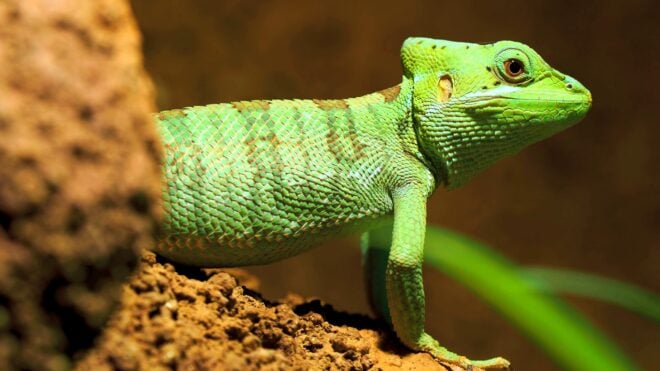If you’ve just brought home a female puppy and you’re not planning on breeding her, one of the first things you’ll want to do is book an appointment to have her spayed. It’s important to have this surgery done while she’s young in order to avoid that dreaded first heat cycle. Trust us, it can come as quite a shock if your dog’s in heat before you get that spay appointment on the calendar. This strange time period can be a trying time for you as an owner, as you’ll notice lots of changes in your dog.
And if you're not planning to spay her, you'll definitely need to know about dogs in heat, including how long this cycle lasts, its symptoms, and what to do while they're going through it.
Read on to learn all about dog heat cycles. They may be a little tricky, but learning the facts can make them easier for you and your pup.
What Does It Mean When A Dog Is In Heat?
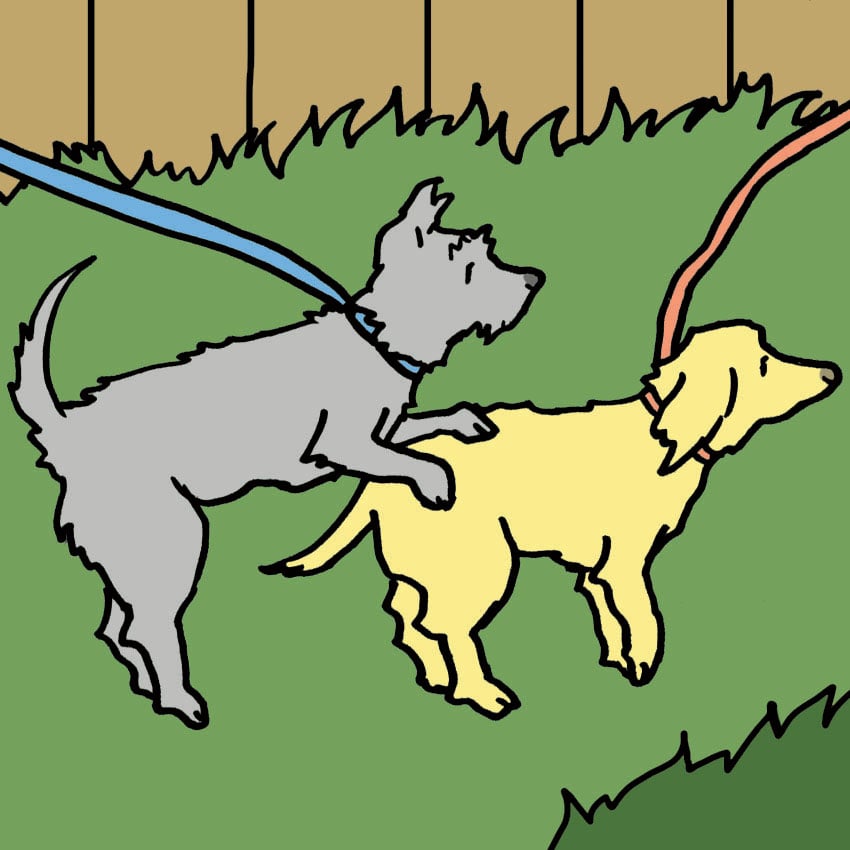
When a female dog enters her first heat cycle, it’s a sign that she has reached sexual maturity. She’s now able to become pregnant and bear a litter of puppies. Despite this, almost all vets and breeders alike recommend waiting until she has gone through at least one, and preferably two, heat cycles prior to breeding her.
According to the American Kennel Club: “It is strongly advised not to breed young female dogs during their first and second cycle. Their eggs are not yet mature and the dog hasn’t reached full maturity.” Breeding your dog while she’s still a puppy can have negative effects on both her and her babies.
How To Tell If Your Dog Is In Heat
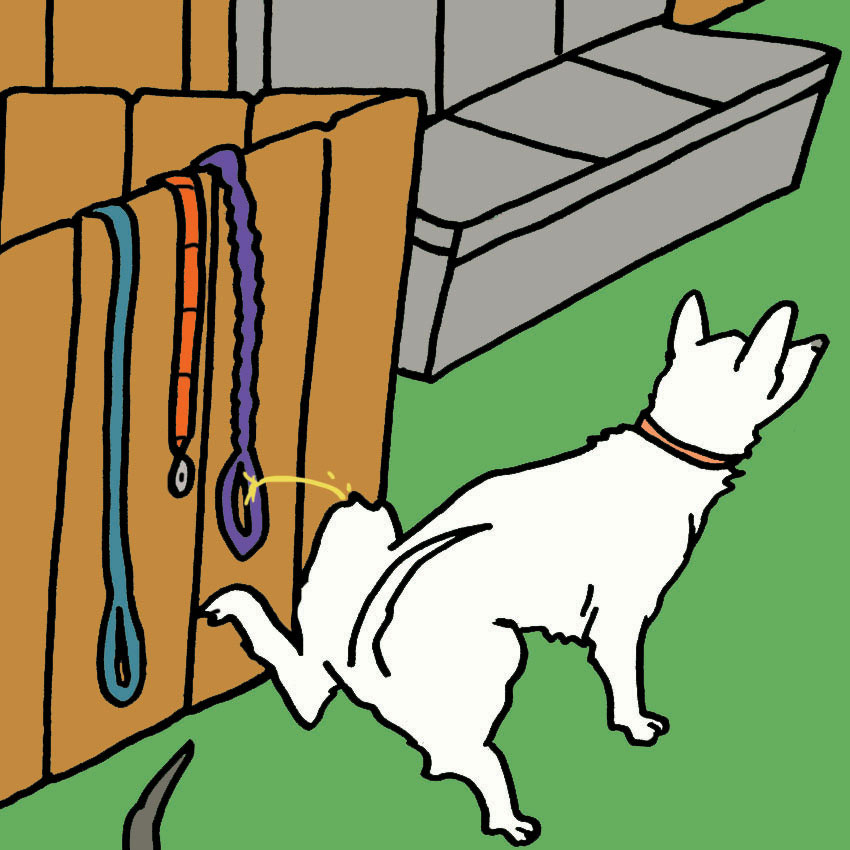
If you’re wondering how to tell if your dog is in heat, trust us, you’ll know! Aside from the moodiness and changes in behavior we mentioned earlier, your dog will display plenty of physical symptoms, which present themselves in phases.
Phase 1: Proestrus
According to Peggy Parries, a Labrador retriever breeder at Laurel Fork Labs in Laurel Fork, Virginia, the first stage of heat in known as "proestrus." During this phase, Peggy says that the vulva will swell and the dog will experience bloody discharges. Increased urination is also likely during this stage, so be sure to give your pup plenty of supervised opportunities to use the bathroom.
Phase 2: Estrus
After a few days to a week, the bloody discharge will turn yellow and your pup will show signs of being ready to breed with a male dog. This phase is referred to as estrus. During this phase, your dog may become agitated and restless, as though she’s constantly seeking a mate, and she may move her tail to the side. This means she has entered her most fertile phase.
Be aware that male dogs will be very attracted to your pup during this time. Male dogs can smell the pheromones put off by a female dog in heat for miles, and they will do almost anything to get to her.
Aggression is also common during this phase. Peggy advises "to keep your female dog away from males during this stage. Make sure you always walk her on a leash and never leave her out in the yard — even a fenced yard — without being present.”
Phase 3: Diestrus
Things will start to calm down a bit as your dog enters the diestrus, or the final phase of heat. During this phase, symptoms start to diminish. Her discharge and swelling will slowly return to normal, and her mood will improve, unless she’s gotten pregnant during her heat cycle. In that case, you’ll be welcoming a litter of puppies in about 60 days.
When Do Dogs Go Into Heat?
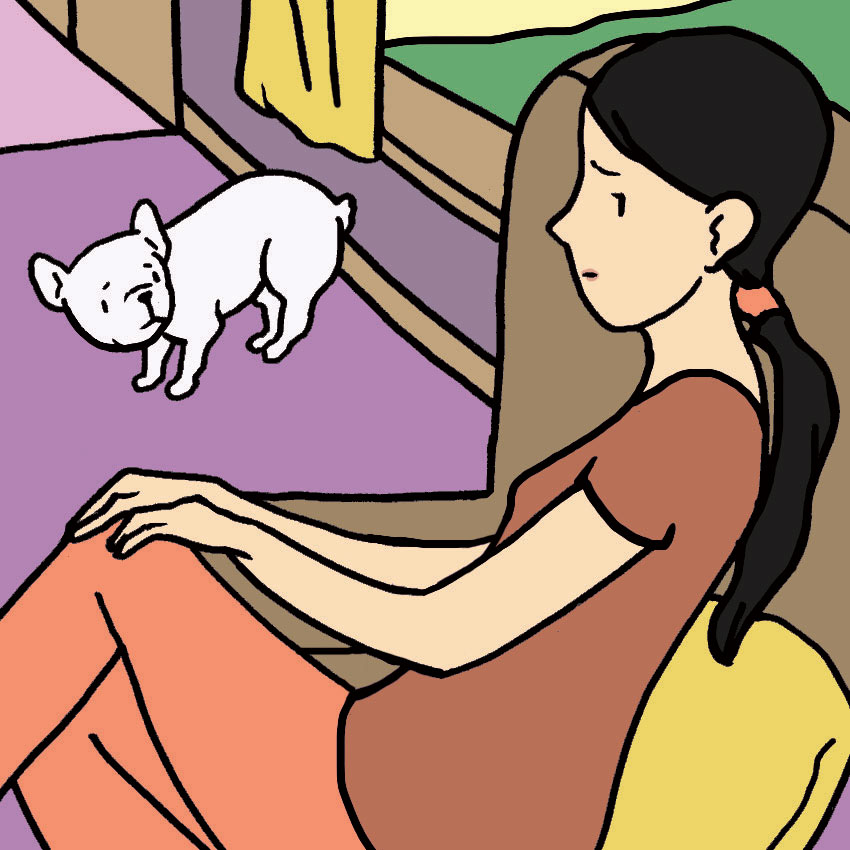
Most dogs tend to have their first heat cycle around six months. However, this can vary by breed and even by dog. Small-breed dogs like terriers and Chihuahuas tend to go into heat as early as four months. The very largest breeds, like Great Danes and Newfoundlands, often don’t go into heat until they’re over a year old. According to Petcha.com, “The range occurs because puberty is related to growth and physical maturity."
How Often Do Dogs Go Into Heat?
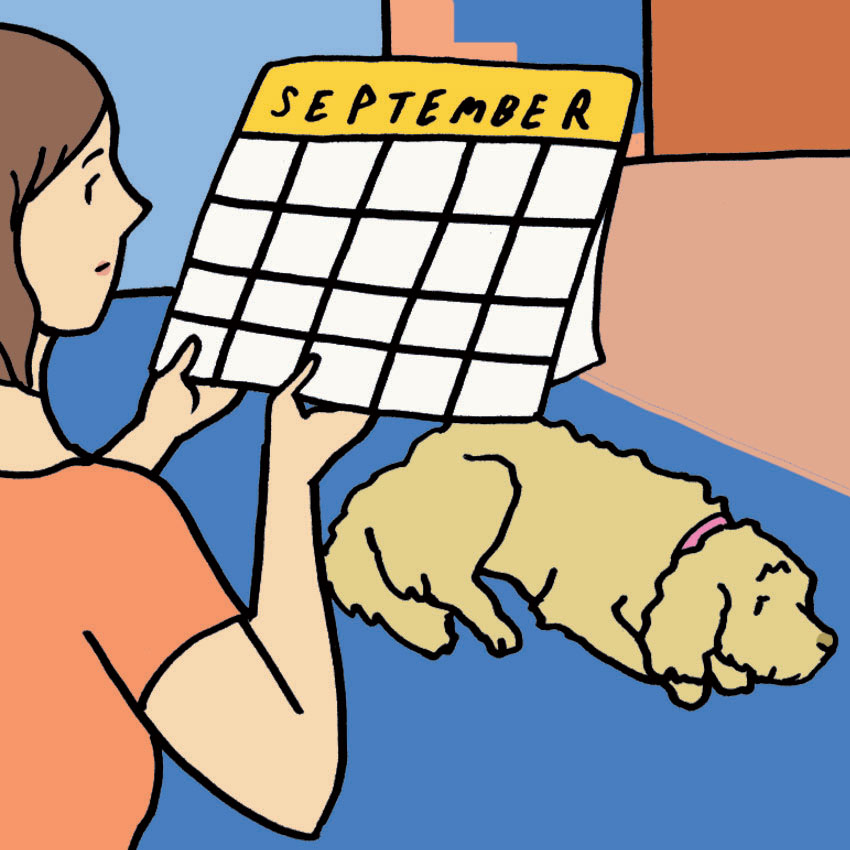
The frequency of your pup’s heat cycles can vary based on her breed as well. Most dogs will go through two heat cycles each year, but smaller dogs may go into heat more often. Additionally, large-breed dogs can go as long as 12 to 18 months between heat cycles.
If you’re looking to breed your female dog, keep in mind that it may take some time for her cycles to become regular. The AKC advises that you keep a journal of her cycle dates until they become more predictable.
How Long Are Dogs In Heat?
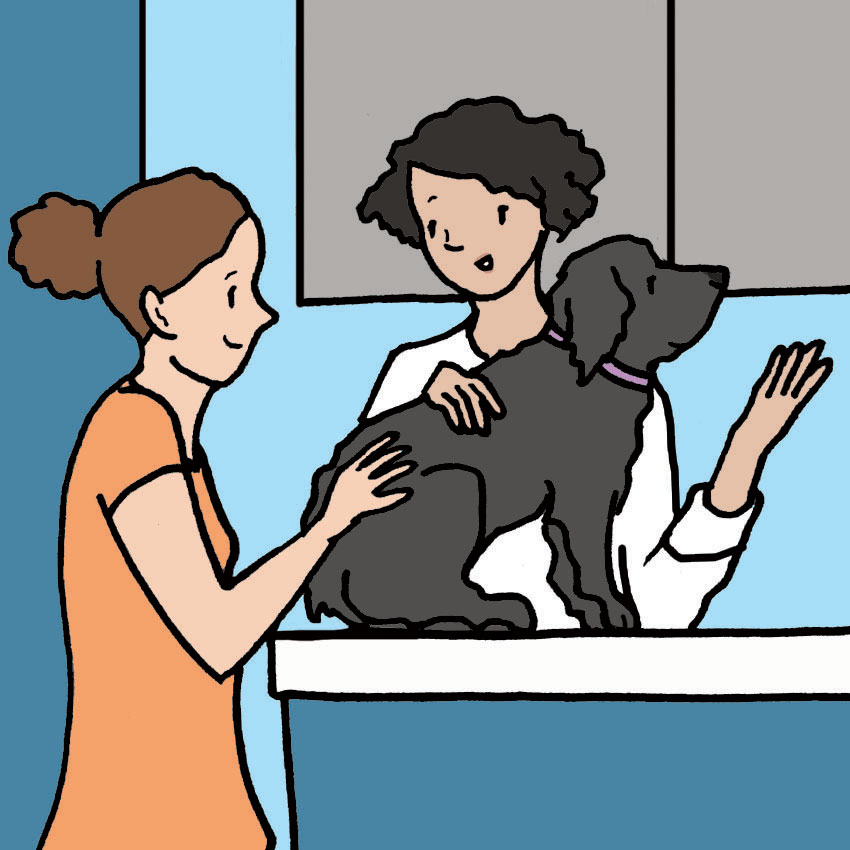
According to WebMD, heat usually lasts around 18 days, though it can be shorter or longer. You’ll know the cycle is over when her vulva returns to its normal size and there’s no more bleeding or discharge.
According to Peggy, “A dog stays in heat for about 21 days, but some have stayed in longer and can even ovulate as late as 21 days in the cycle.” The heat cycle length can vary between dog breeds, and even from cycle to cycle. There's a chance that no two could be the same.
How Long Does A Dog Bleed While In Heat?
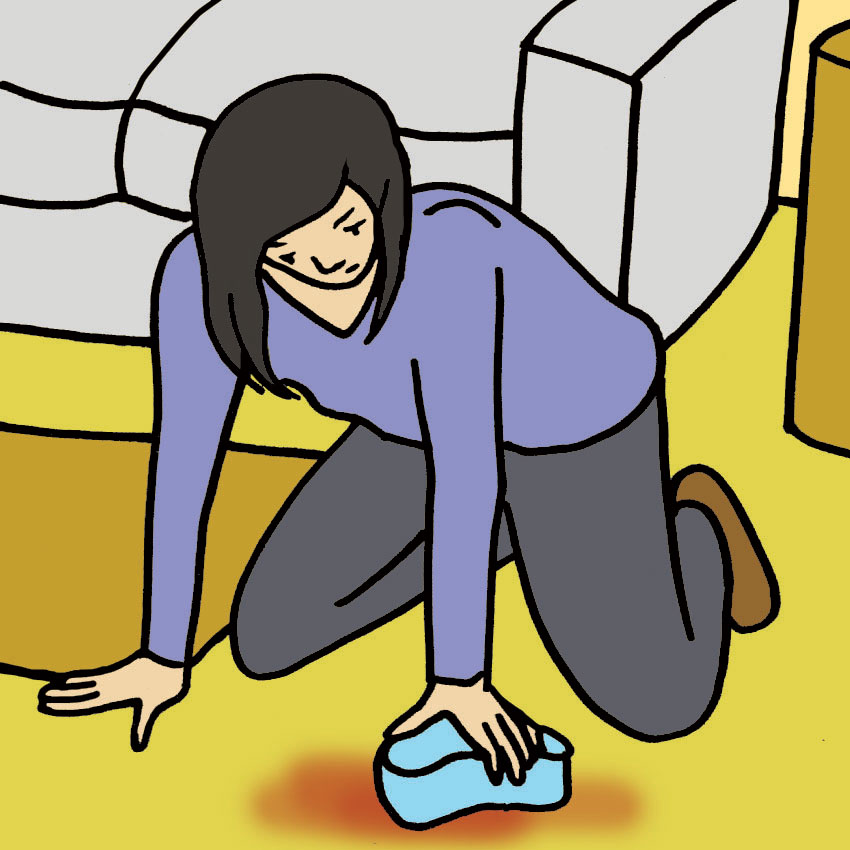
Both the proestrus and estrus stages of your dog’s heat cycle may be marked by bloody vaginal discharge before female dogs become super receptive to males, according to Banfield Pet Hospital. These phases of the heat cycle typically lasts 18 days, but in extreme cases, as little as four to as many as 51 days, according to East Central Veterinary Hospital.
What To Do When Your Dog Is In Heat
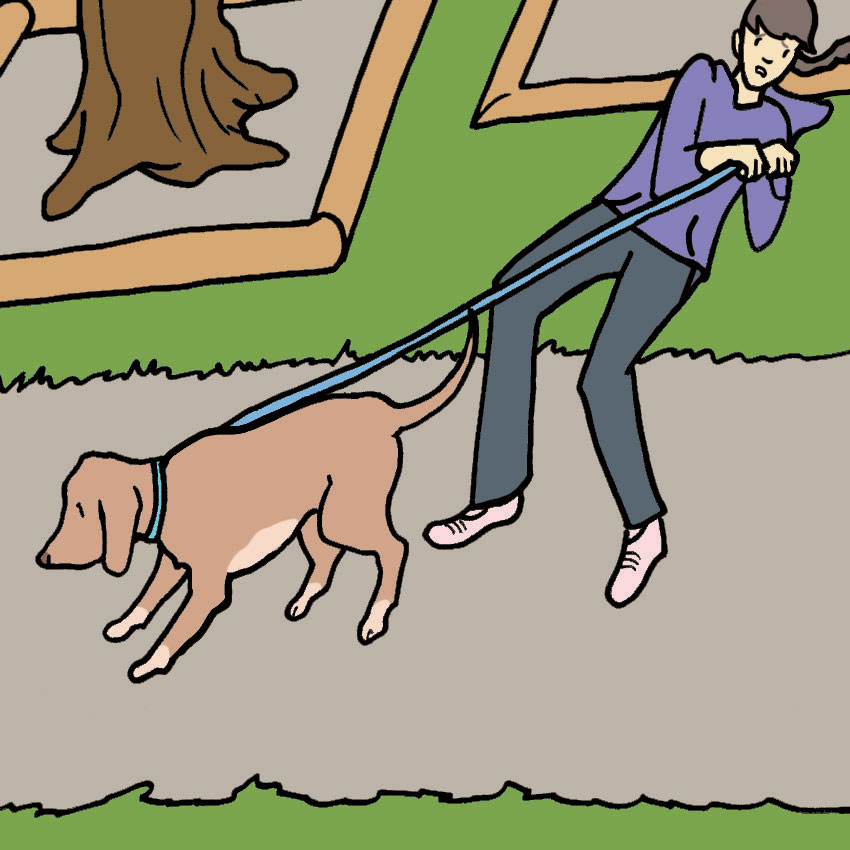
Dogs in heat can be a huge challenge for you. You’ll naturally want to keep her outside more to prevent a mess in your house while she’s having discharge, but you can’t leave her unattended due to frisky male dogs in the vicinity. Banfield Pet Hospital suggests the following: “The best option is to keep your female indoors and confined to an area where the discharge won’t be a problem to clean up, such as a tiled or concrete area in the basement or garage. Baby gates are an easy way to confine your dog without putting her behind a closed door.”
You can also purchase diapers for dogs in heat, or even make your own. If you choose to go this route, you’ll want to introduce these during your pup’s earliest heat cycle. She’s much more likely to accept them if you start while she’s young and offer lots of treats or praise.
Do Male Dogs Go In Heat?
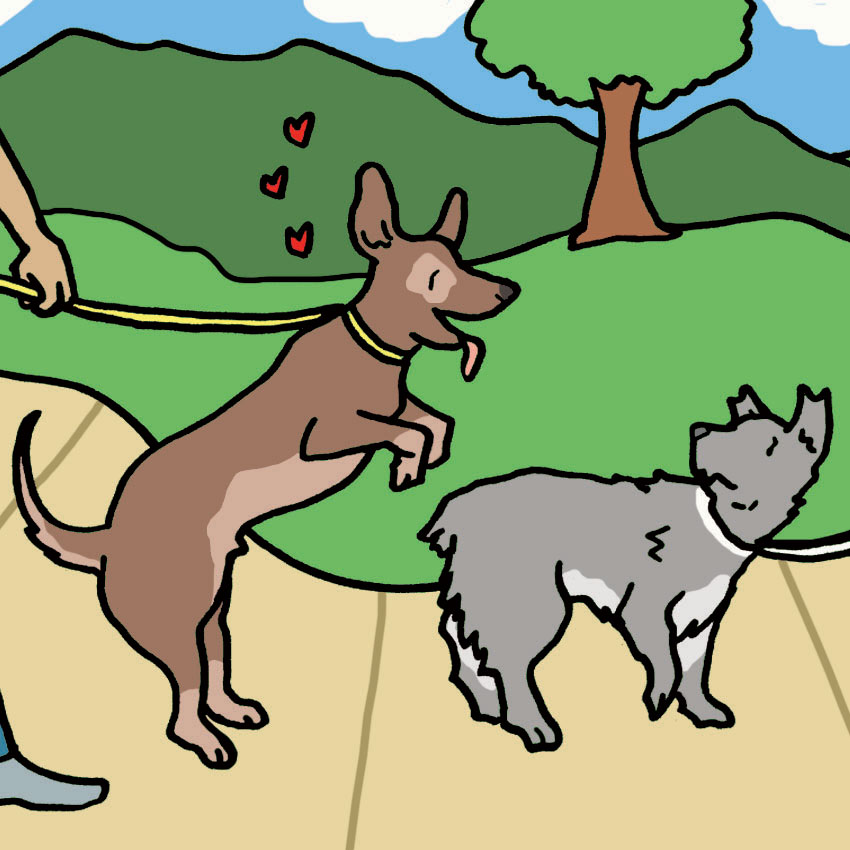
It may seem like male dogs are always in heat — after all, they didn’t get their randy reputations for nothing! But the estrus cycle is a part of the female reproductive system, and male dogs are excluded from this biological occurrence.
As far as male dogs reaching sexual maturity for breeding, they’re usually ready early on, between four and six months. But just as with female dogs, male dogs should not be bred as puppies. Pet-happy.com says that “while male dogs are able to mate most of the time, serious breeders would allow some time before breeding them again, and breed them only at times when their genital and overall health are in excellent condition.”
Have you learned how to tell if a dog is in heat? If so, please SHARE this article with your fellow pet owners on Facebook!



